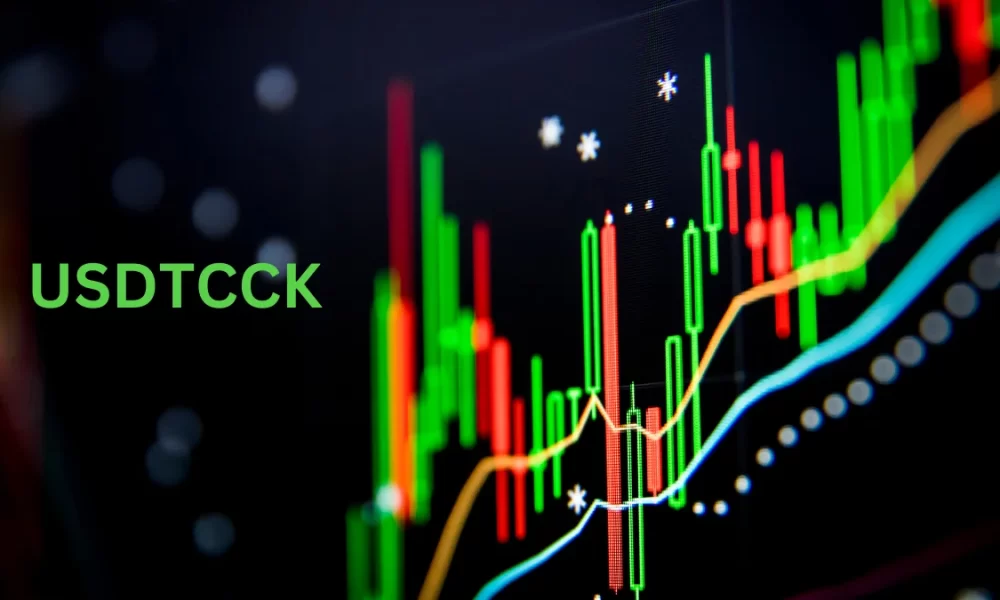USDTCCK – A Detailed Guide

Imagine a type of cryptocurrency that doesn’t swing wildly in value like Bitcoin or Ethereum. That’s the idea behind stablecoins – digital money pegged to something steady, like the US dollar. One new stablecoin making waves is USDTCCK, and it has a unique twist – a connection to the Chinese government.
What is USDTCCK?
Think of USDTCCK as a digital dollar bill. Just like other stablecoins (like Tether), it aims to stay at a steady value of $1. The “CCK” part hints at a connection to the Chinese Communist Party (CCP). This doesn’t necessarily mean the CCP controls it, but it might target Chinese users or have some kind of CCP approval.
How Does USDTCCK Work?
USDTCCK runs on blockchain technology, similar to what Ethereum uses. In theory, for every USDTCCK out there, there should be a real $1 sitting in a reserve somewhere. This reserve helps keep the value of USDTCCK stable at $1.
Why Use USDTCCK?
Stablecoins like USDTCCK offer a few advantages:
- Safe Haven: When the crypto market gets crazy, USDTCCK can be a safe place to park your money. Its value stays relatively steady, so your funds aren’t on a rollercoaster ride.
- Faster Payments: Sending money internationally can be slow and expensive. Stablecoins like USDTCCK might be a faster and cheaper way to send money across borders, especially between China and other countries.
- Borrowing and Lending: The world of Decentralized Finance (DeFi) uses stablecoins for things like borrowing and lending crypto. USDTCCK’s stability could be attractive for people using DeFi apps.
- Hedging: If your country’s currency is shaky, USDTCCK could be a way to protect your money from inflation.
Things to Keep in Mind
Stablecoins aren’t perfect:
- Trust Factor: You’re basically trusting the company that created USDTCCK to be honest about their reserves. If they’re not, the whole system could collapse.
- Government Watch: Governments are still figuring out how to regulate stablecoins, especially those tied to currencies like the US dollar. This could create uncertainty for users.
- Who Holds the Purse Strings? If the company behind USDTCCK has financial problems, the value of the coin could plummet.
- Market Matters: How easily you can buy and sell USDTCCK depends on the exchange you use. Less popular coins might be harder to trade.
Conclusion
USDTCCK is a new player in the stablecoin game, and its connection to the CCP adds an interesting wrinkle. While it offers potential benefits, there are also risks to consider. As with any investment, do your research and be cautious before using USDTCCK or any other stablecoin.
Questions and future of USDTCCK:
The transparency of USDTCCK’s reserves remains a question. How can users be sure there’s truly a $1 backing every USDTCCK token?
This is a major concern with USDTCCK, and indeed, with many stablecoins in general. Unlike traditional banks, which are audited and regulated, some stablecoin issuers are less transparent about how they back their tokens. In the ideal scenario, for every USDTCCK in circulation, there should be $1 sitting in a reserve account. However, users have limited ways to verify this claim. Some stable coin issuers may say they get checked out by auditors (like accountants who look at the books), but how thorough these checkups are and whether the checkers are unbiased can be all over the place.
The long-term impact of CCP involvement is unclear. Could the government exert more control over USDTCCK in the future?
The CCP’s involvement in USDTCCK adds another layer of complexity. While it might signal some level of acceptance for USDTCCK within China, it also raises questions about control. The CCP could potentially exert more control over USDTCCK in the future, influencing its use, value, or even restricting its circulation. This uncertainty might make some users wary of adopting USDTCCK.
Regulatory frameworks for stable coins are still evolving. How will this impact the viability and adoption of USDTCCK?
Governments around the world are still grappling with how to regulate cryptocurrencies and stablecoins. USDTCCK, being pegged to the US dollar, might attract particular scrutiny from regulators who are concerned about potential impacts on monetary policy, financial stability, and money laundering. Unclear rules from governments could make it tough for USDTCCK to catch on and be widely used. Without clear guidelines, people might be hesitant to jump on board.